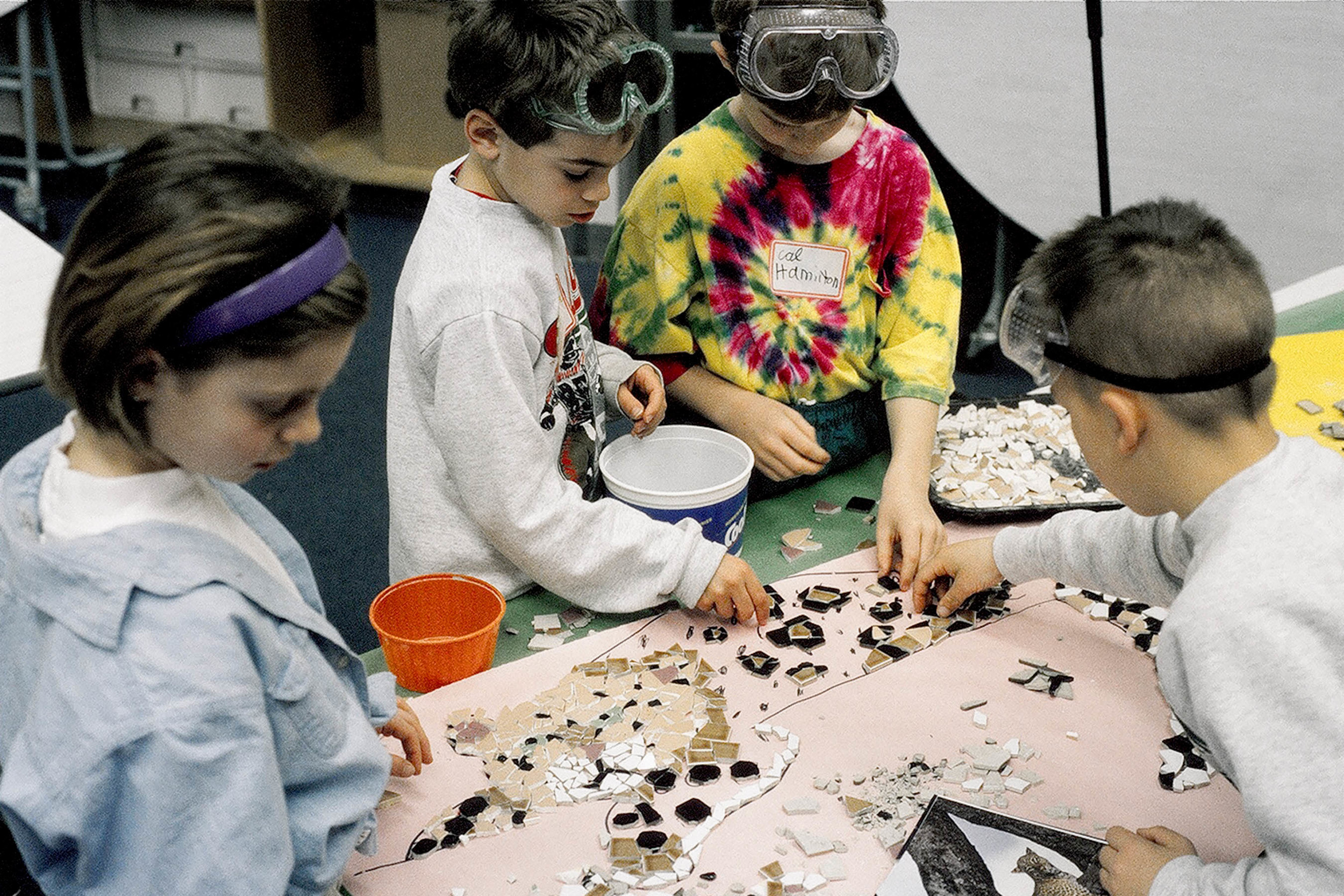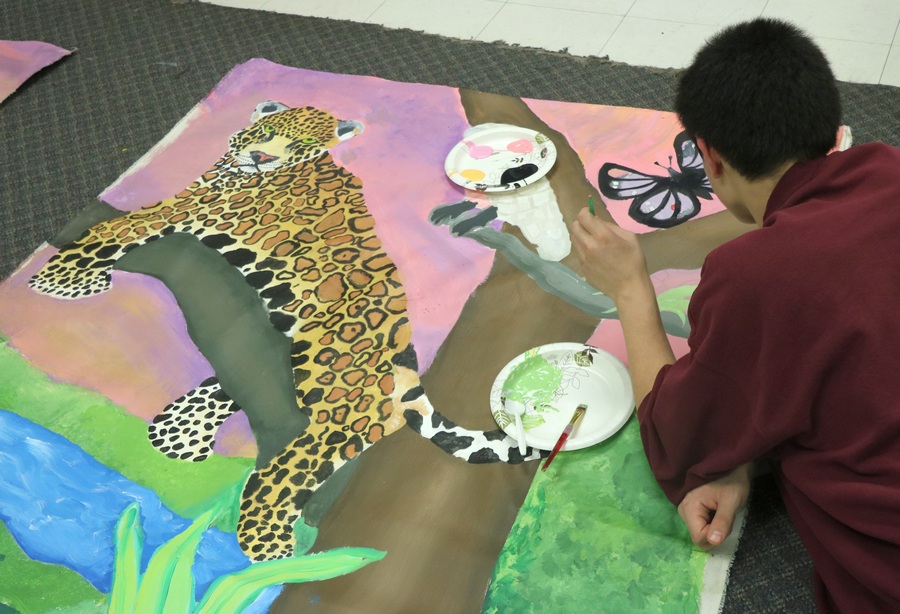Participatory Public Art Process
Why Create Participatory Public Art?
- An ordinary park, wall or entrance can be transformed by the creation of a sculpture, mosaic, decorative walkway or bench.
- Participatory public artwork transforms not only the site but the people who create the artwork and also the people who view it.
- For some it is a unifier of community; for others it is an opportunity to learn new skills and to express creativity. For all it is a symbol of community life and spirit.
Family art workshop with Lynn Takata
How is Participatory Public Art Created?
- Creating participatory public art can involve the organization of a committee to plan and carry out the project representing various sectors of the community.
- A site is chosen—a park, a wall, a column, a stairway or even a floor.
- After getting input, several conceptual drawings are developed.
- After feedback, a final conceptual drawing is designed which reflects the interests, concerns and budget of the project.
- Creating the artwork is an improvisational process. Lynn Takata choreographs each individual's artwork into a vibrant and strong design using the final conceptual design as a guide. This site design process allows for a better composition.
Making mosaics
How Many People Can Be Involved?
Each project depends on the enthusiasm and interest of the community. Some projects have involved the day to day work of hundreds of people—including representatives of community organizations, local officials, and a wide variety of individuals... children, seniors, and artists.
Family brainstorming session with Lynn Takata



